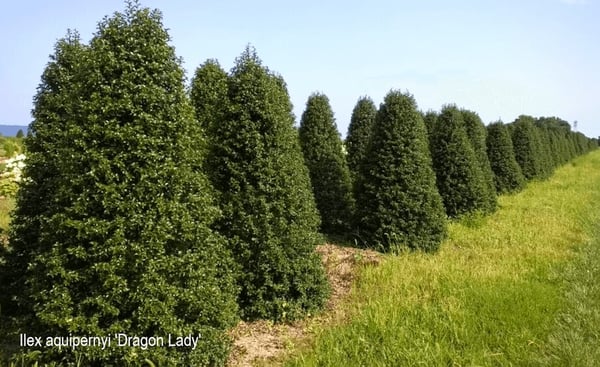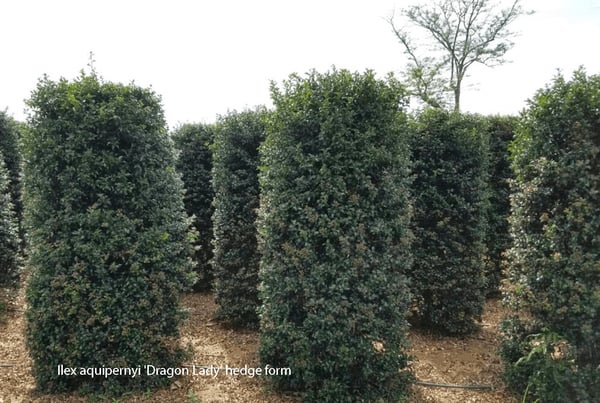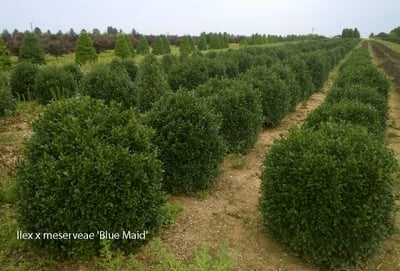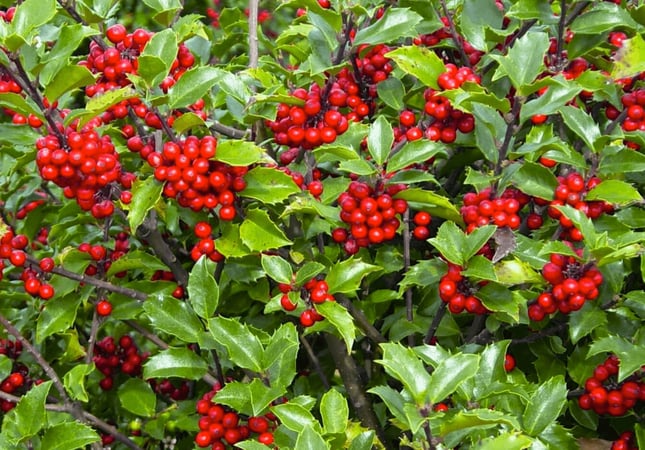Brilliant clusters of holly berries nestled among those deep green leaves on a holly shrub - it’s an iconic part of a winter landscape that I really enjoy. There are different holly categories, but the popular American Holly requires at least one male in proximity to female plants for those colorful berries to produce.
Following that one simple rule will ensure the successful pollination (and fruiting) of your hollies. It's something to keep in mind as you design and execute on a customer’s landscape plans.
"Relay" Pollinators and Self-Pollinators
 Pollination happens in several ways. Most plants have separate male and female parts. Some plants are monoecious and self-pollinate. Examples would be american beech, spruce, birch (betula), cedar (cedris), pine, and sycamore (platanus). Other plants depend on “relay” sources like wind and pollinators like bees. Since monoecious plants have male and female parts in the same plant, you can buy as few or as many as you’d like, and not worry about male and female plants for pollination.
Pollination happens in several ways. Most plants have separate male and female parts. Some plants are monoecious and self-pollinate. Examples would be american beech, spruce, birch (betula), cedar (cedris), pine, and sycamore (platanus). Other plants depend on “relay” sources like wind and pollinators like bees. Since monoecious plants have male and female parts in the same plant, you can buy as few or as many as you’d like, and not worry about male and female plants for pollination.
The American Holly is in the category of dioecious plants. Dioecious plants are self-sterile, meaning they require a male and female cultivar to successfully pollinate and produce flowers and thereafter seeds. The male plants produce staminate flowers with male reproductive capacity. Females display pistillate flowers. It is estimated that 29% of trees are dioecious.
For hollies, that means the male flowers produce pollen that gets transferred to the female flowers, producing those show-stopping red berries. Hollies are often purchased for hedging purposes and you want to be sure your customer will see colorful berries produced on their hedge. So ensuring there is a male plant in the immediate vicinity if not in the yard, is something that must be factored into the landscape design plan.
Promoting Pollination - From Nursery to Landscape
 To promote pollination (and fruiting) at the nursery, we plant both male and female hollies. They don’t have to be right next to each other. They just have to be somewhere on the farm. Fruit production is variable, particularly among the blue holly (blue maid, blue princess, dragon lady) cultivars. Some years it is heavy and some not. Our observation is that when plants display heavy fruit production they are usually under stress (this is a survival mechanism). This could be related to insect pressure, but more likely due to moisture. They are so well irrigated at the nursery that they have almost no stress. So fruit production in the field isn’t as great as it would be if they were out in the landscape and not receiving that regular dose of irrigation.
To promote pollination (and fruiting) at the nursery, we plant both male and female hollies. They don’t have to be right next to each other. They just have to be somewhere on the farm. Fruit production is variable, particularly among the blue holly (blue maid, blue princess, dragon lady) cultivars. Some years it is heavy and some not. Our observation is that when plants display heavy fruit production they are usually under stress (this is a survival mechanism). This could be related to insect pressure, but more likely due to moisture. They are so well irrigated at the nursery that they have almost no stress. So fruit production in the field isn’t as great as it would be if they were out in the landscape and not receiving that regular dose of irrigation.
The blues seem to do better with fruiting if they are a little bit thirsty at times depending on the whims of the weather. Ilex opaca, the American hollies, on the other hand, fruit well regardless of irrigation. This probably explains why American hollies tend to be planted as individual specimen trees in the landscape. Whereas, the blues are put in as foundation or hedging plants where irrigation lines can be easily installed.
Beyond the Holly - Understanding Pollination & Fruiting
 When considering the pollination needs of a tree or shrub for a landscape design, you first need to know the habit of the tree or shrub you are choosing. For dioecious plants you need to know if a male of the species is around already, or if one will need to be included in the mix to produce pollen for the females. You also need to be aware of what type of pollination is required (wind or insects) and how that will affect fruit production for a shrub or tree.
When considering the pollination needs of a tree or shrub for a landscape design, you first need to know the habit of the tree or shrub you are choosing. For dioecious plants you need to know if a male of the species is around already, or if one will need to be included in the mix to produce pollen for the females. You also need to be aware of what type of pollination is required (wind or insects) and how that will affect fruit production for a shrub or tree.
Understanding pollination and fruiting of the plants in your design will go a long way in ensuring you and the client get the results you both are looking for.
Reserving the plants you need for when you need them can be a real challenge. Download our ebook Solving Plant Shortages in a High Demand Landscaping Market to learn about practical solutions to common plant sourcing problems.





